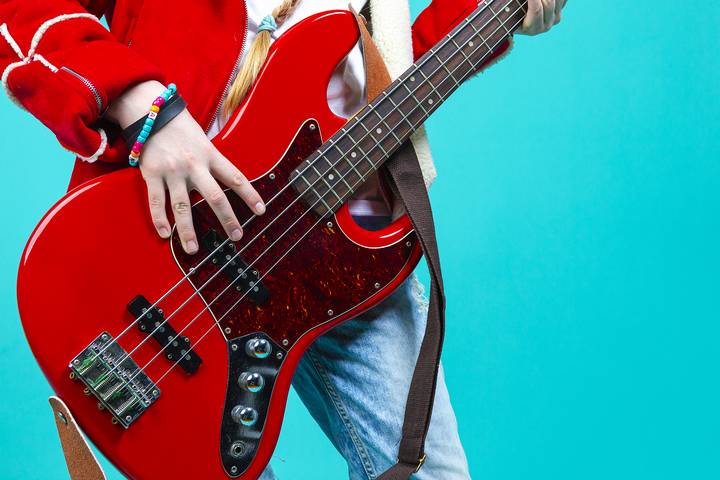Guitars are popular musical instruments that generate sound by vibrating their strings. Possessing a resonant wooden body and strings shaped on the fretboard, these instruments enable musicians to produce a diverse spectrum of melodies. Whether played using fingers or a pick, guitars allow musicians to express their creativity. They are used across various music genres, such as rock, jazz, blues, and classical.
The best types of guitars possess exceptional playability, sound quality, and artisanship. Careful construction and premium tonewoods contribute to these instruments’ rich, well-rounded, and communicative sound. In addition, they should accommodate varying playing styles and preferences. Exceptional playability is crucial for smooth finger movement and fretting to decrease fatigue during prolonged playing sessions. Also, their durability should make them steadfast companions for musicians during long practice sessions and live shows.
Discover the most popular types of guitars and their characteristics.
Type #1: Classical Guitars
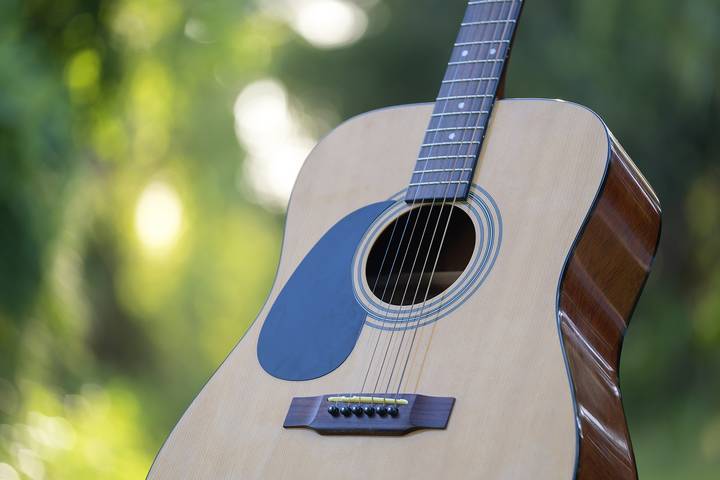
The classical guitar is a timeless musical instrument steeped in a rich history. It is renowned for its graceful and traditional design. Typically featuring six nylon or gut strings, the classical guitar produces gentle, warm melodies. Its wide, flat fretboard and compact body set it apart from steel-string acoustic guitars. This versatile instrument graces genres such as classical music, Spanish flamenco, and others where a delicate, expressive sound is preferred. Skilled musicians wield the classical guitar to elicit diverse emotions, from calming tunes to complex compositions.
The popularity of the classical guitar stems from its ease of use. It comes with smooth nylon strings, giving the instrument unique tonal qualities. Its capacity to emit a vast dynamic range permits musicians to pour various emotions into their music. With gentler string tension than other guitars, players can concentrate on honing their technique and expression. Novice and experienced players are drawn to classical guitar’s inviting, intimate nature.
Classical guitars require regular maintenance. Many musicians use guitar lacquer to maintain these instruments’ wooden bodies, protecting their beauty. This coating shields the wood from damage like scratches or humidity while providing a polished appearance. Guitar lacquer has long been a tradition, essential for longevity.
Type #2: Electric Guitars

Electric guitars are celebrated for their incredibly amplified soundscapes. This type of guitar uses electronic pickups to transform steel string vibrations into electromagnetic impulses. The signals go to an amplifier, where they are boosted and the tone is sculpted through diverse configurations. The early 20th-century emergence of electric guitars sparked a wave of originality and imagination. This innovation enabled artists to experiment with feedback, sustain, and distortion effects, creating original guitar techniques and mesmerizing live spectacles.
Electric guitars exhibit various shapes, dimensions, and blueprints, each presenting distinctive tones and playability. They are commonly furnished with several pickups, enabling musicians to achieve various sound textures. This instrument stands out in a harmonic ensemble, allowing musicians to tailor their sound to their artistic ambitions. Additionally, the legendary status of iconic guitarists has etched the electric guitar into popular culture. Many view it as a beacon of resistance, individuality, and music’s persuasive power.
Type #3: Acoustic Guitars
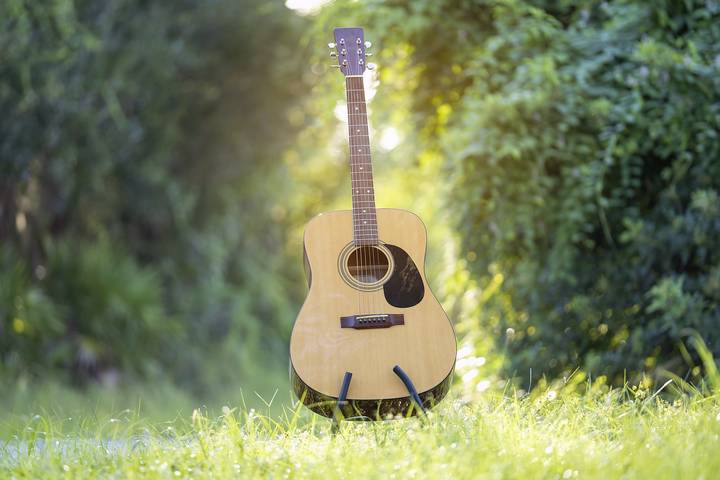
The acoustic guitar captures hearts with its warm, natural sound. It produces sound purely from its natural properties without amplification or electronic gadgets. The hollow body and sound hole allow string vibrations to resonate, creating beautiful music. This instrument is available in diverse shapes and sizes, like dreadnought, concert, and parlour guitars. Each embodies its own unique tonal characteristics.
An acoustic guitar’s simple structure and ease of play present the ideal starting point for budding musicians embarking on their musical voyage. Playing the instrument without amplification evokes an intimate and authentic connection with the audience during unplugged sessions or intimate gatherings. The acoustic guitar shines on its own or harmonized with an ensemble. Its adaptability makes the instrument suitable for various music styles, particularly folk, country, pop, and rock.
Type #4: Bass Guitars
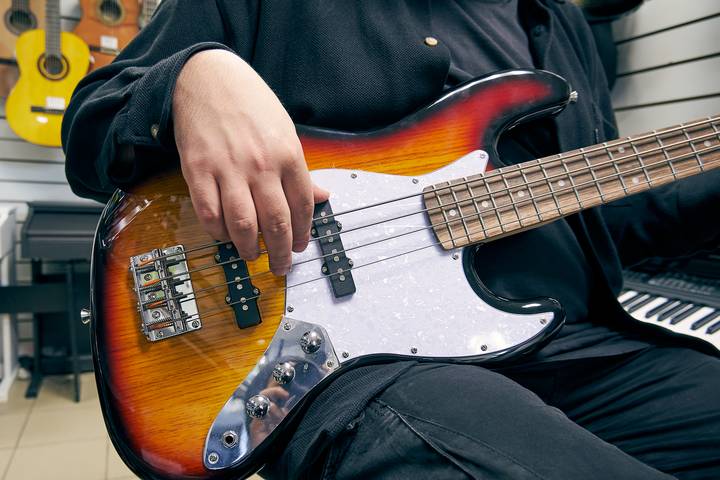
The bass guitar is one of the most popular musical instruments. This type of electric guitar plays an indispensable part in a band’s rhythm section, contributing to the fundamental low-end frequencies that support music. Generally, bass guitars consist of four strings, though five and six-string versions are also widely used, offering an extended range of lower notes. Musicians pluck or slap bass guitar strings to produce rich and rhythmic sounds.
Bass guitars produce powerful, resonant notes that amplify the music. Working in unison with the drums as part of the rhythm section, the bass guitar sets the groove. It also lays a solid base for the rest of the band members. Bass guitar vibrations connect directly with audiences, allowing them to feel even more immersed in the music. Its unique timbre and capability to bridge rhythm and melody make the bass guitar essential in diverse music genres like rock, funk, jazz, and countless others.
Type #5: 12-String Guitars
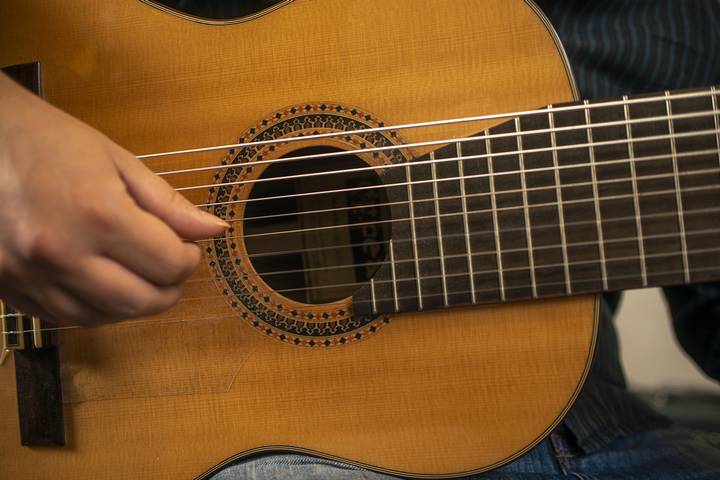
The 12-string guitar is famous for its double-string arrangement, which generates a deep and reverberating sound. This instrument can be an acoustic or electric guitar featuring six sets of strings. Each group comprises two strings harmonized in unison or octaves. Due to the extra strings, the 12-string guitar yields a more robust and lively tone than its 6-string counterpart, producing a chorus-like impact.
12-string guitars are appealing for their remarkable sound qualities. Its luxurious and shimmering tones offer a delightful audio experience, making it an ideal choice for solo acts and studio recordings. The additional strings lend the instrument an extraordinary acoustic character, infusing a hint of magic while creating a multidimensional musical experience. The 12-string guitar is frequently linked to folk and rock tunes from the 1960s and 1970s. Renowned artists like Bob Dylan and The Byrds use it extensively in their compositions.
Type #6: Archtop Guitars
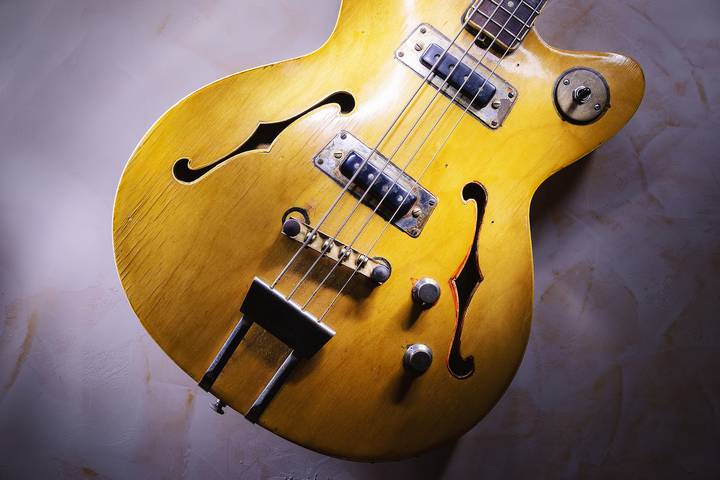
Archtop guitars are refined musical instruments renowned for their unique appearance and sound. Originating in the early 20th century, this type of guitar gained popularity in jazz and swing music. Its top and back are delicately carved to form a slight arch, enhancing its projection capabilities. The archtop typically features a floating bridge and tailpiece, allowing tone and playability customization. Its F-holes contribute to an elegant sound, making it a jazz musician’s favourite.
The archtop guitar’s sophisticated design positions it as a symbol of elegance and skill in the guitar realm. The archtop guitar’s ability to produce acoustic and electric sounds adds to its versatility, making it adaptable to various music genres beyond jazz. These include blues, rockabilly, and even some styles of rock and roll. Within jazz music, the archtop guitar enables it to shine in ensemble performances, supplying an evocative quality that enhances other instruments. Renowned jazz guitarists such as Django Reinhardt and Wes Montgomery have solidified the archtop guitar’s iconic status in jazz history.
Type #7: Ukulele Guitars
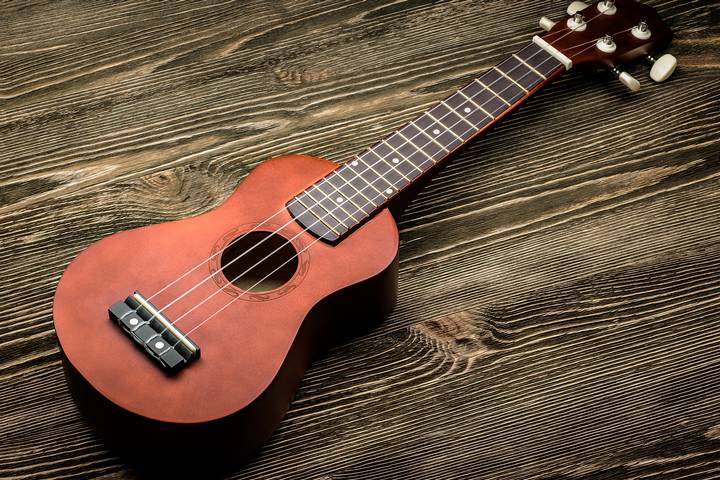
The ukulele guitar is a delightful musical instrument recognized for its petite size and lively sound. Hailing from Hawaii in the 19th century, this stringed instrument drew inspiration from the Portuguese machete de braga. The ukulele generally features four nylon strings, but variations with six or eight strings are also available.
Several factors contribute to the ukulele’s popularity, including its manageable learning curve, pleasant sound, and strong connection to relaxation and happiness. Its compact size and limited strings make the ukulele relatively simple to learn and play. The instrument’s vibrant and melodic tones produce an uplifting ambience that delights listeners. The ukulele’s versatility allows for solo acts, group jam sessions or even singing accompaniment.
With its merry and harmonious sound, the ukulele enjoys widespread popularity across numerous music genres, such as traditional Hawaiian music, folk, pop, and rock. Its portability and playability make this instrument suitable for novices and seasoned musicians, spreading joy and melodious cheer wherever it’s played.
Type #8: Resonator Guitars
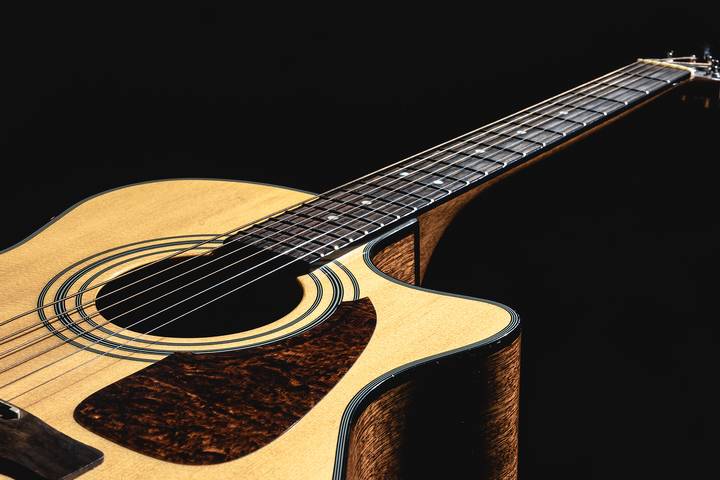
Developed in the early 20th century, the resonator guitar was designed to solve the issue of increasing instrument volume in band settings without amplifiers. Its metal cones are situated within the body, resonating from string vibrations and producing a powerful sound. Resonator guitars showcase diverse designs like single-cone, tri-cone, and biscuit-bridge models. Often linked to the blues, bluegrass, and country music genres, this instrument’s unique sound allows it to shine in group performances.
In the blues and bluegrass music scenes, the resonator guitar elicit nostalgic feelings. Its metallic, twangy tone injects a classic and folky element into tunes. In addition, its popularity spans other genres. Many musicians are drawn to the instrument’s intriguing design and distinct sound, using it in various performances.
Type #9: Flamenco Guitars

The flamenco guitar exudes a magnetic charm. The design features a slender top and back, facilitating heightened responsiveness and a brilliant, drum-like sound. The body may be slightly shallower than traditional classical guitars, yielding increased resonance and projection. Nylon strings are typically used for flamenco guitars, resulting in a clear and lively tone.
With roots in Spain’s Andalusian region, the instrument is specifically crafted to enhance flamenco’s expressive essence. Dynamic sounds accentuate elaborate footwork, hand claps, and potent vocals in flamenco performances. The instrument’s unmistakable raspy and heart-rending sound makes it indispensable to flamenco music’s rhythms. Furthermore, the flamenco guitar has ventured into diverse music genres, fostering cross-cultural musical interplay and alliances.
Type #10: Tenor Guitars
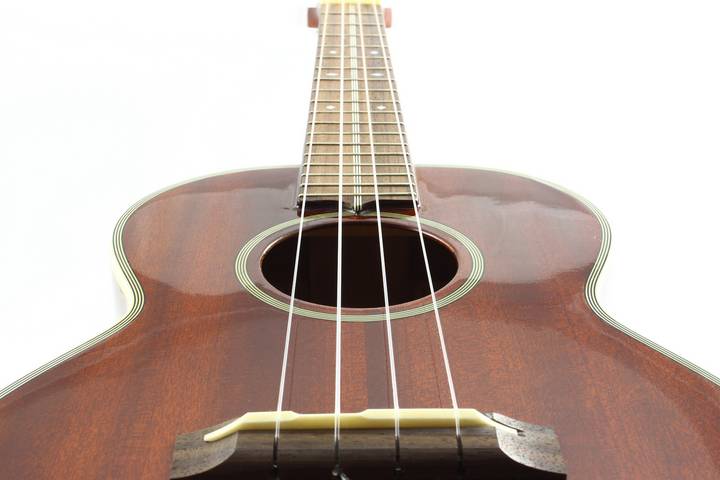
The tenor guitar has four strings and a larger body than standard guitars. This type of instrument is commonly tuned in fifths, yielding an original sound. Emerging in the early 20th century, the tenor was first popular in jazz and folk music. With a scale length between a ukulele and a regular guitar, it provides a comfortable playing experience for musicians with smaller hands.
The instrument’s distinctive tuning, often using CGDA or GDAE configurations, imparts an individual voice that shines through when played in ensemble settings. The tenor guitar injects a collaborative element into jazz tunes, enhancing the music’s harmony. For folk and country genres, the bright, upbeat sound of the tenor guitar blends well with acoustic configurations.

